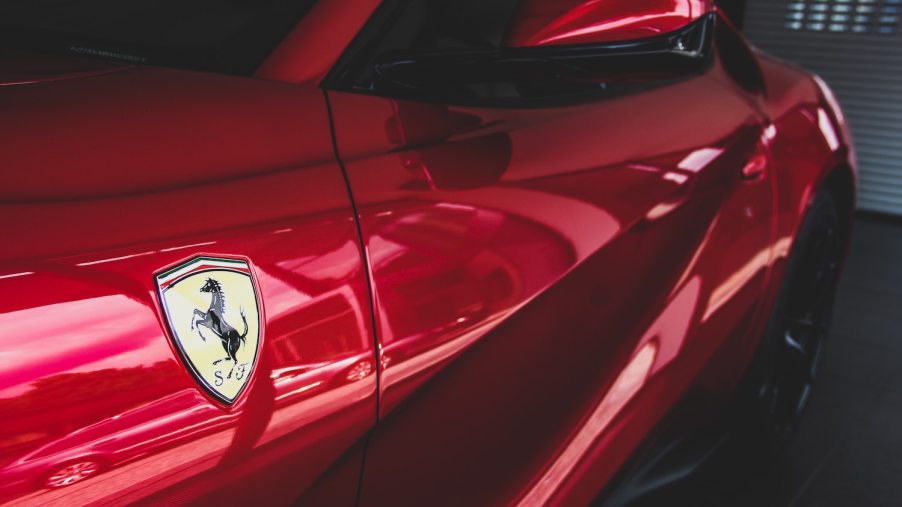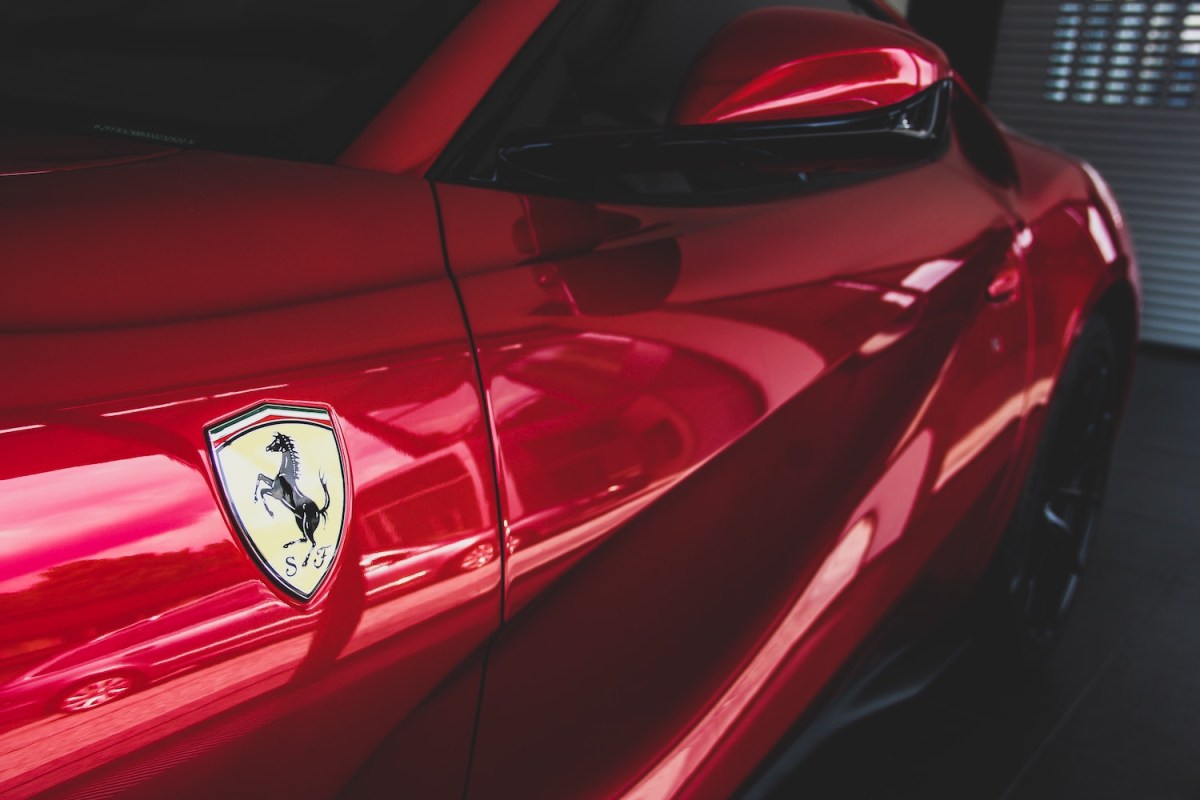
Origin Story of Ferrari’s ‘Cavallino Rampante’ Prancing Horse Logo
On every beautiful example of kinetic art emerging from Ferrari‘s factory in Maranello, Italy, is the Cavallino Rampante, or “Prancing Horse,” emblazoned on the yellow rectangular badge. The equine silhouette is one of the most recognizable car logos in the automotive world. Still, few know the seldom-told story of its origins, with some claiming Formula One team and company founder Enzo Ferrari only uttered it once.
Interestingly enough, Ferrari’s exalted stallion wasn’t first featured on vehicles of the former Grand Prix winner’s namesake. The Ferrari logo even predates the car brand’s first manufactured car and first appeared on another familiar Italian make.
1923 Ravenna Grand Prix

In front of thousands, at the wheel of his Formula Libre-spec Alfa Romeo RL 3000, Enzo Ferrari set a record time around the 27.7-mile Savio Circuit with a time of 28 minutes and 32 seconds. Although some say they met during the post-race celebrations, more than likely, since 25-year-old Enzo won, he was granted the chance to meet local dignitaries afterward. He appeared with Count Enrico Baracca and Countess Paolina Baracca, regional leaders and parents of famed Italian WWI fighter pilot Francesco Baracca.
Enzo lauded Baracca after receiving letters from his brother Dino who spoke enthusiastically about the dogfighting debonair with 34 kills to his name, according to Museo Francesco Baracca. As Cortile explains, during the rendezvous, the countess suggested that Enzo use the same prancing horse their son had painted on the side of his biplane during “The Great War” for good luck. But where did Baracca get the symbol?
Major Baracca’s Cavallino Rampante
Between winter 1916 and spring 1917, Baracca adopted the Cavallino Rampante as his personal insignia and painted it on his Nieuport II biplane. This custom arose with Italian aviators during WWI to distinguish their aircraft. Italy’s Museo Francesco Baracca states it was chosen to honor his former calvary regiment: the Reggimento Piemonte Cavalleria, the modern descendant of the Royal Piedmont Regiment of the Duke of Savoy, founded in 1692 by Vittorio Amadeo II. The prestigious regiment had the motto “Venustus et Audax,” or “Beautiful and Bold,” with its heraldic coat of arms bearing a silver prancing horse on a red field, looking to the left and with its tail lowered.
While there are claims the horse on Baracca’s biplane was red, silver, and black on various backgrounds, all configurations are probably correct. The museum states, and a myriad of photos and stories from the time support, that Baracca changed the colors to make it stand out more on the fuselage, including using a white cloud as a background on traditionally dark green planes. Nevertheless, the first photo of Baracca and his aircraft, featured in the May 20, 1917 edition of Il Mondo, shows the “Ace of All Aces” with his Nieuport 17 sporting a black prancing horse, which adorned his subsequent SPAD aircraft as well.
There is speculation, however, that Baracca’s prancing horse may have resulted from alternative, Teutonic origins.
A German horse?
Cortile states that Baracca shot down an aircraft manufactured in Germany early in his career. When he landed near the wreckage to recover a piece of the enemy aircraft, he ripped off a canvas badge as a token of good luck that showed the city seal of Stuttgart, where the plane was manufactured. After Baracca’s death, the canvas prancing horse would be sent to his parents. From them, it passed into the hands of Enzo in the form of a necklace during one of the versions of their meeting, as purportedly stated in Nieuport Aces of World War 1.
Curiously, Stuttgart’s seal has the same prancing horse as the historical regiment of Baracca. The capital and largest city of the German state of Baden-Württemberg has its etymological roots in the Old High German word Stuotgarten, or “stud farm.” Moreover, the horse can also be seen on the badge of Porsche, which is headquartered in Stuttgart.
However, there is no documentation of Enzo Ferrari receiving the piece of aircraft canvas with Stuttgart’s stallion.
Alfa Romeo built; Scuderia Ferrari raced
Regardless of the origins of the prancing horse—or its mythical vagueness— the first car to wear the Ferrari logo was actually an Alfa Romeo. In 1929, laid on a background of canary yellow, the city color of Modena, where the racing team Scuderia Ferrari was founded by Enzo, and with the horse’s tail pointing upward, the “Ferrari Stables” emblem began adorning team publications and signage, appearing on a Scuderia Ferrari team Alfa Romeo 8C 2300 Mille Miglia Zagato Spider for the first time at the 1932 24 hours of Spa, winning the Belgian event. Enzo retired from racing that same year when his son Dino was born, and in 1933, Scuderia Ferrari began effectively operating as Alfa Romeo’s racing division, with Enzo as director.
Fourteen years later, following Europe’s assault from allied and axis powers and their workshop’s subsequent bombing, Franco Cortese would pilot the first sanctioned Ferrari—the innovative 1.5-liter V12 125 C—around the Piacenza Circuit on May 11, 1947. Although Collier Auto Media says that particular car became a test mule, a modified racer, and eventually disappeared as a customer car, it was the first in a long line of passionate and soulful champion racers and thoroughbred road cars.


